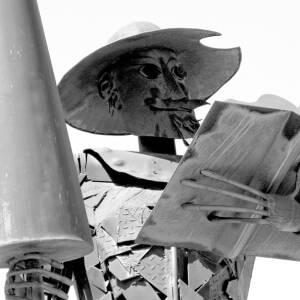Gaitero
Yesterday I showed hoops made for barrels for the local cider industry in the small consejo of Cabranes. Today, more about cider in Asturias. Much of that industry is carried on by people who press and process small quantities for friends and family, but there are major manufacturers as well. Villaviciosa and Nava are the most important consejos, housing the biggest manufacturers; and Villaviciosa houses probably the largest manufacturer, El Gaitero. Which means "The bagpiper" - more about that name later.
The main photo shows the El Gaitero works, alongside the Ría de Villaviciosa, looking north towards the sea from Villaviciosa, which is maybe 1km back behind us. All the buildings on the right are part of the Gaitero works. The photo´s taken at low tide.
Extra 1 shows the works from further north and higher up. Again, all that building on the Ría frontage, the length of the photo, is the Gaitero works. Extra 2 shows the view north along the Ría. All three photos show the Ría at low tide. Alongside the Ría for much of its length down to Villaviciosa are, or were, farms making use of the fertile alluvial soils. These were - are - known as "porruas". The big problem faced by porruas was the salt-water tides which swamp the area twice a day. True they have deposited the fertile soils and also allow the Ría to be navigated down as far as Villaviciosa, but at the same time they are destructive of crops and trees and buildings. El Gaitero´s owning family grew apples and made cider, and did so despite the tides, and as the photos show, they prospered. They became the town´s largest manufacturer and benefactor.
The name "Gaitero" is Spanish for "bagpiper". Extra 3 shows the carving that gave it that name - a 13th century bagpiper carved into the arch over the main entrance to the 13th century (Romanesque) church of Santa María de la Oliva.
Extra 4, which I missed first time round, shows another view through the marshlands to El Gaitero.

Comments
Sign in or get an account to comment.


